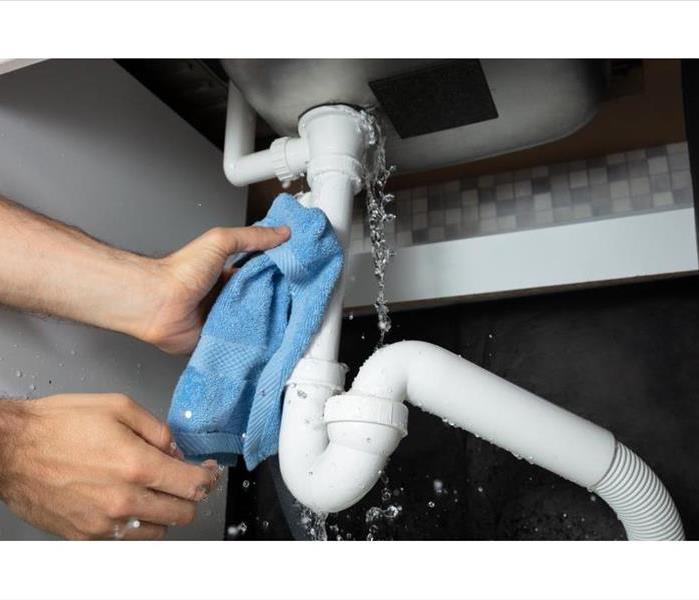How to Determine Kitchen Water Damage
1/9/2023 (Permalink)
How to Determine Kitchen Water Damage
You wake up in the morning to find your kitchen counters covered with water and you think, "Oh no! Something's wrong with the plumbing.” Then you realize that a pipe under the sink has burst, but this can happen all the time! Here are some ways to tell whether your kitchen has actually been damaged by water:
Wet Cabinets
Look for wet spots on the wall, baseboards and flooring. Check the ceiling for stains (check under kitchen cabinets too). Look inside the sink and dishwasher. If you can't find any obvious signs of water damage, inspect your refrigerator by removing its kick plate or looking underneath it with a flashlight.
Leaking Appliances
Leaky appliances are an obvious sign of water damage. If your dishwasher or refrigerator were to start leaking, a mess would quickly develop around the appliance and could cause extensive damage. If you're noticing a leak from any of these appliances, stop using them immediately and call for professional assistance. The same goes for any other type of leaking appliance—including hot water heaters, faucets, and more—that may be leaking into your kitchen.
Drips and Leaks
- Listen for drips and leaks. The first step to determining if you have water damage is listening for the source of the leak. If you hear dripping or running water in your kitchen, investigate where it is coming from and see if there is any type of leak that can be fixed with a quick repair job.
- Look for drips and leaks. If you cannot find the source of a drip or leak by listening for it, then move on to looking at your kitchen cabinets and drawers for signs of damage caused by water intrusion such as cracks or holes in woodwork; peeling paint; warped wood doors; warped cabinet panels; bubbling paint cans used on countertops under sinks (this means there was standing water at one time); discoloration on surfaces near plumbing fixtures like faucets or dishwashers (again indicating standing water).
- Feel for drips and leaks. Sometimes it isn't easy to detect a drip or leak just by looking around because they may not be visible from every angle so take advantage of all senses including touch! Get down low where possible floors creak beneath my feet whenever I walk across them because my weight shifts causing vibrations that are magnified upon hitting those boards hard enough that they make noise when struck against something else like another board nearby making it vibrate until we reach equilibrium again.
Signs Your Kitchen Has Water Damage
You probably don't realize that your kitchen has water damage until it's too late. It's not uncommon for leaks to appear in the ceiling or walls, causing mold growth and structural damage. If you notice any of these signs, it's time to call in an expert:
- Leaks or stains on the ceiling
- A damp smell in the air (or a musty smell)
- Mold growing on walls or ceilings
If you’re experiencing water damage in your kitchen, it’s important to know what to look for. If you see any of these signs, contact a professional right away to assess the situation and determine whether or not there is damage.


 24/7 Emergency Service
24/7 Emergency Service
